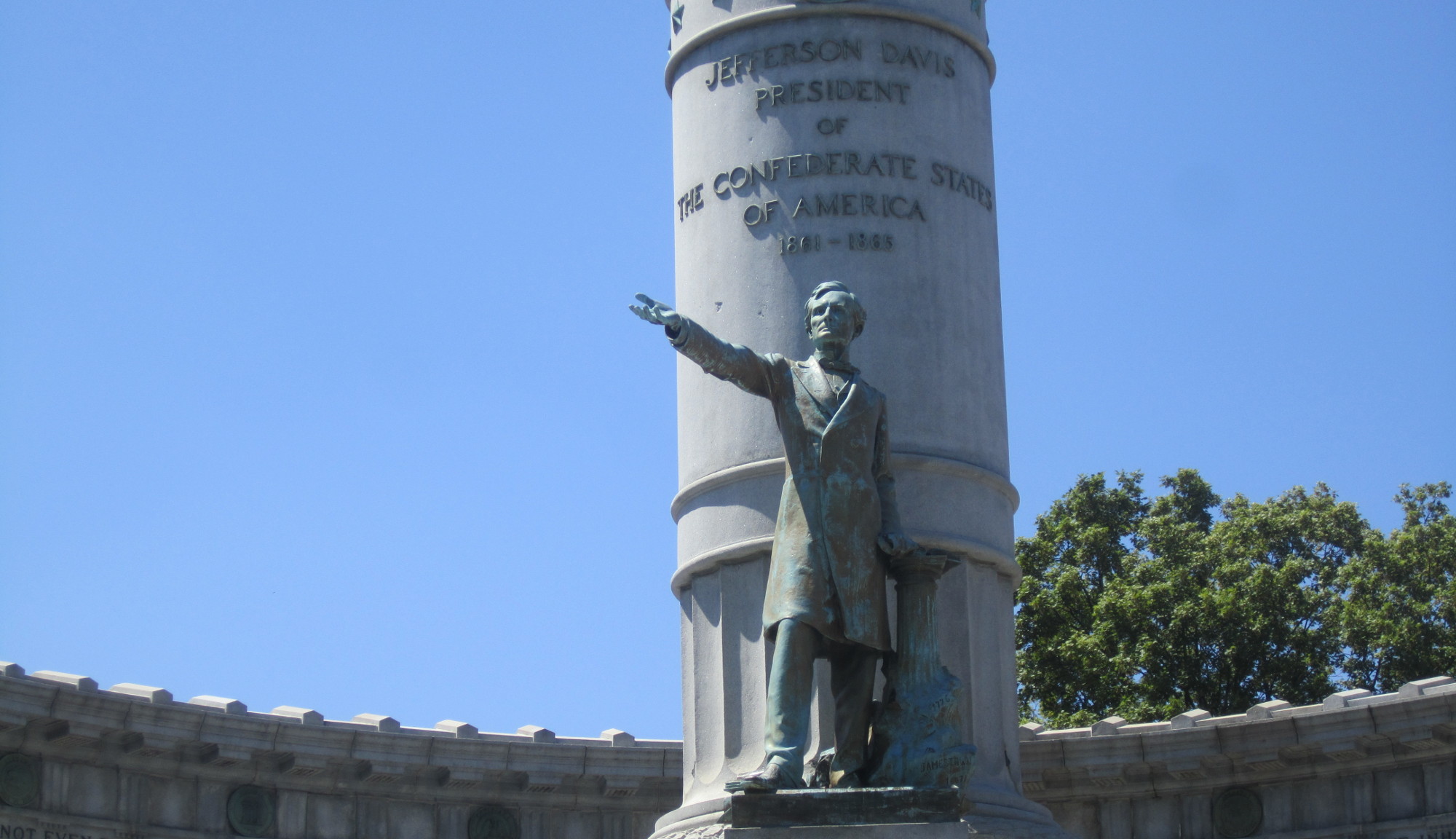What to do with the Confederate monuments

Jefferson Davis monument, Richmond, VA. Photo credit: Wikipedia user Billy Hathorn. Distributed under the Creative Commons BY-SA 3.0 license.
As you are almost certainly already aware, this weekend’s “Unite The Right” rally in Charlottesville, Virginia to protest the removal of a statue of Confederate general Robert E. Lee turned violent on Saturday when one of the protesters, James Alex Fields, pointed his car at a group of peaceful counter-demonstrators and stepped on the gas. His terrorist act, which resulted in the death of counter-demonstrator Heather Heyer and injuries to 19 other marchers, has put the question of what to do about Confederate monuments across the country on the national agenda.
Everyone else is now offering their opinions about what the right thing to do with Confederate monuments is, so I thought I would join in and offer my own.
I believe that both sides in this controversy are making a valid point. Advocates for taking the statues down point out that they are fundamentally racist because they memorialize men who took up arms against the legitimate government of the United States in order to keep other human beings in bondage based on their race, which is true. And advocates for keeping them up argue that they mark an important piece of American history that shouldn’t be airbrushed out of public memory, which is also true, though not for the reason they think it is. (The vast majority of Confederate monuments went up decades after the war, their intent to send the message that whites still reigned supreme in the South. This makes them historically significant symbols of the South’s vile hundred-year struggle after the war to deny African-Americans their rights under the law — a legacy of shame that should never be forgotten.)
So what do we do? How do we balance purging racism from public spaces with preserving the memory of that racism so that we might never repeat it? My proposal is simple.
Our nation’s capital, Washington, D.C., is a city of monuments. Let us therefore take down the Confederate monuments, all of them, and bring them all to Washington, D.C. And let us build a great building in that city, an edifice of marble and stone large enough to store and display them all. Let us put this building somewhere in Washington where the public can easily find it, somewhere close to Metro stations and parking. Let this place be somewhere prominent, somewhere the great building cannot possibly be missed. Let us arrange the Confederate monuments inside this building so that visitors can browse them all, each displayed with signs and placards providing background information on the monument itself, the figure it memorializes, and the community it was originally erected in.
And then let us paint this building black. Deep, flat black, with no ornaments or decorations to enliven it save two. One will be a bronze statue upon its top, a version of the Statue of Freedom that crowns the Capitol dome, only with Freedom shorn of her sword and garlands and weeping, her face buried in her hands. And the other will be an inscription across its front, slashed into the marble in deep red, informing the visitor that here is a new kind of American museum: the Museum of Treason.
Let us make the experience of visiting the Museum of Treason equal to the crimes the traitors fought for the right to commit. When a family enters the Museum of Treason, let us separate them physically, and keep them separate for as long as they stay within. Let us force the visitor to surrender their personal property at the entrance, with no guarantees they will get it back at the exit. Let us replace the visitor’s clothing with rough, harsh rags, their fine shoes with cheap ones that pinch and split. Let us organize the visitors randomly into groups and chain the members of the groups together; let us shackle their feet with iron, each pair of fetters linked to the next, so they must shuffle past the exhibits in the beaten-dog manner of the chain gang.
Let us fill the halls of the Museum of Treason with the sound of the lash. Let us surround these would-be masters with the crack of the whip they blasphemously claimed a God-given right to wield, and with the cries and whimpers of real human beings on the other end of that whip. Let the visitor experience the world these marble men would have built with their ears, as well as eyes.
Let us, in other words, take these dishonest monuments and create from them an honest one, a true telling of the cause their subjects fought and died for. Because the root of the American experiment is liberty, and the cause they fought for a nightmarish perversion of that ideal. Freedom to enslave another is no freedom at all; it is just the law of the jungle, the abuse of the weak by the strong; it is the opposite of freedom, the negation of justice; it is prejudice elevated to the status of law, a debasement, a defilement; it is sick; it is wrong.
These monuments belong in hell. Let us therefore make a hell, and consign them to it. And let us give this hell a place of honor, so that by its presence it may inspire us to never have to make another.
